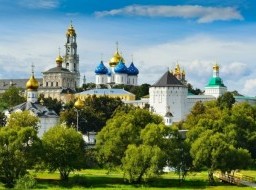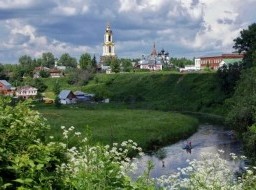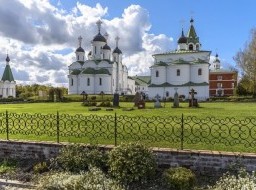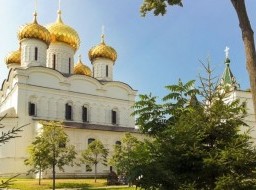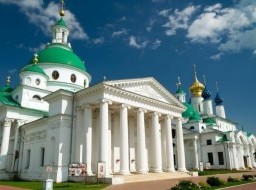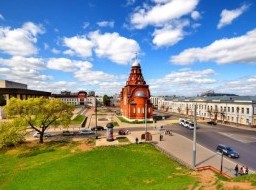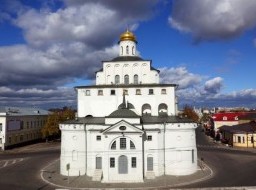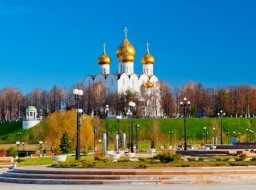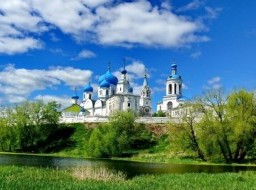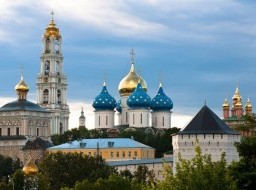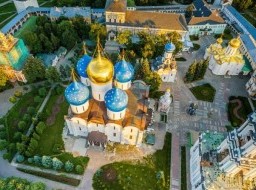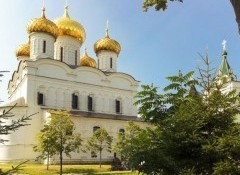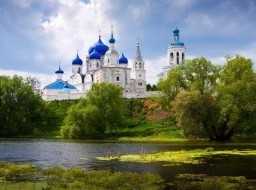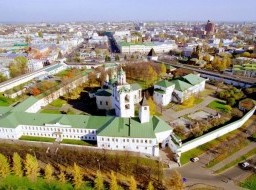Rostov Finifti Museum (Rostov Enamel)
Finift is the oldest decorative and artistic craft of Russia, one of the most interesting and vivid types of miniature painting, which has always belonged to the elite art forms. The exclusive nature of enamel miniatures is due to the artist's high artistic skill and extremely difficult, labor-intensive process of their manufacture.The history of the fishery in Rostov Veliky is more than 200 years old. In the museum you will get acquainted with the unique products of the factory, made in different years by its outstanding artists and jewelers, the secrets of the technology of creating the enamel and life of the workshops of the 19th century. The master class will allow those who wish to create their own enamel miniatures. Visiting the production with your own eyes you will see how the artists create paintings, and the jewelers painstakingly collect the jewelry pattern. Rostov the Great from the 18th century to the present day is the center of the enamel art in Russia. Finifty in Russia is called artistic enamel. There is no consensus on the origin of the word "Finift". Some scientists believe that it comes from the Greek "finigitis", which means "light, shiny stone", while others believe that it originated from the Byzantine word chemist, which in turn leads from the Greek verb meaning "to pour, melt''. At present this term is used with reference to the Rostov art industry and is present in the same name of the factory: '' Rostov Enamel ''. The first discoverer of the technique was the French jeweler Jean Tuten. In 1632, he first opened the secret of enamel paints and thereby expanded the scope of the use of artistic enamel. Enamel is a vitreous mass, which, depending on the oxides of metals added to it, is colored in different colors. There is information about the existence during this period of a workshop for a workshop at the Rostov Archbishop's Court and individual masters who worked on orders from the monasteries and churches of the city. The founder of miniature painting "Finifti" according to some sources is Metropolitan Arseny Motseevich. Enamel miniatures adorned objects of church use and cloaks of priests: miter, chalices, the salaries of the Gospels, altars crosses. Since the 1770's, in Rostov there were shops that united artisans in their specialties. Among others, the workshop of icon painters was organized, which included the enamels of enamel. According to various sources, there are known painters of enamels who lived and worked in Rostov in the second half of the 18th century and the first third of the 19th century. These are Burov, A. Vsevlyatsky, Gvozdarev, G. Elshin, P. Ivanov, A. Moshchansky, S. Petrov, S. Troitsky, Chaynikov. During the revolution, hard times came, but many masters with their devotion to art were able to preserve the trade and, reunited, reintroduced the artel, which after the Great Patriotic War was reorganized into the factory "Rostov Enamel", which still carefully preserves the traditions of the first enamel masters. The Soviet period of Russia's life has formed a new ideology, other forms of expression in art. The art workshop turned into folk art. "Rostov Finift", like many other crafts, managed to overcome great difficulties, preserved production technologies and revived the lost traditions. A new generation of masters has determined the further creative development. In the sixties, the assortment of manufactured products widened noticeably, the miniature figurines began to be made in combination with the scandium, the fabric is a lace made of wire assembled by the patient hands of a master jeweler. Each element of the jewelry pattern is twisted by hand and glued to the paper, then the whole collected pattern is sprinkled with a silver powder-solder and is soldered with a gas burner. Thanks to the scan frame, mass production of various jewelry with picturesque enamel was established. The collective of the factory was replenished with talented young people - graduates of the Fedoskino and Krasnoselsky schools. Together with the masters of the older generation, the painters made a variety in the theme of the painting, the jewelers fruitfully worked on the creation of new forms of products, their role in the design of paintings has increased. The best works of these years, made by painters V. Gorsky, I. Soldatov and jeweler V. Soldatov were exhibited at the World Exhibition in Montreal (1967). Works of old and modern Rostov masters are kept in the State Historical Museum, the State Russian Museum, the State Hermitage, the Armory Chamber of the Moscow Kremlin, the State Museum-Reserve Rostov Rostov and other museum collections and private collections in Russia and beyond. |

